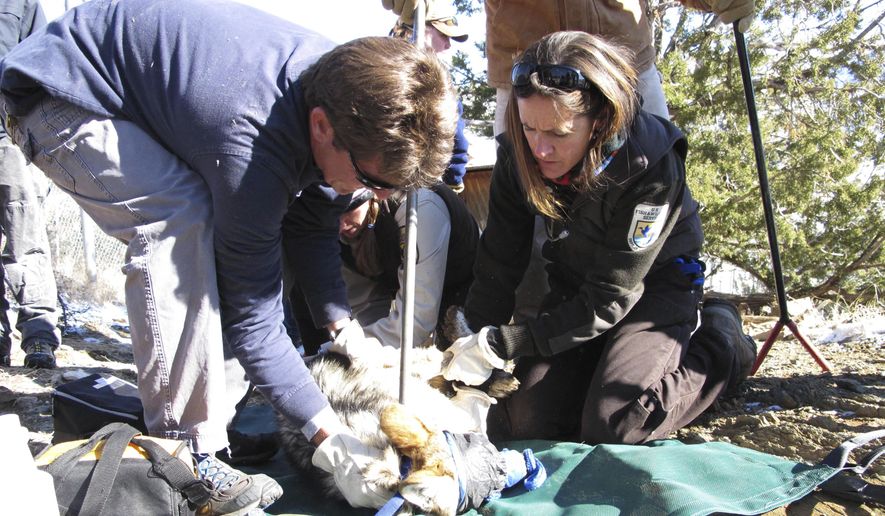EASTERN NECK NATIONAL WILDLIFE REFUGE, Md. — The Delmarva fox squirrel, an endangered critter that scampers through the woods and grassland of this pristine island in the Chesapeake Bay, may not care about the race or gender of the wildlife biologists safeguarding its home.
But the U.S. Fish and Wildlife Service back in Washington does.
The agency’s leaders doubled down on an Obama-era program that made hiring of minorities and women a top priority, and managers are raising red flags about the resulting staffing problems at the more than 500 wildlife refuges across the country.
The program, launched in 2016, centralized recruitment and hiring for science jobs at the Washington headquarters.
The service’s directors in Washington this year are revving up the effort with two national hiring campaigns to target minorities and women during spring and winter college graduations, according to a briefing paper obtained by The Washington Times.
It’s not clear whether there is a large pool of minority candidates looking to get involved in the field. Many of the agency’s employees had rural upbringings in places where hunting, fishing and other outdoor activities were common.
One senior Fish and Wildlife Service employee said the centralized process means the agency will end up sending a pool of candidates who are picked not because they are eager to count birds, but because they have a biology degree and are part of a minority group.
“We’re not looking for people to do this particular job; we’re looking for people who have a particular race or gender,” said the employee, who asked not to be identified for fear of retribution.
The employee said those who do the hiring at refuges already push for diversity and inclusion. Indeed, at a certain level of seniority, managers’ advancement depends in part on how well they promote women and minorities.
Fish and Wildlife Service spokesman Gavin Shire said the focus on hiring women and minorities is not about the animals and the environment but about the health of the agency.
“We cannot conserve wildlife and their habitats in a vacuum. We need the support of the American people,” he said. “We cannot gain the support of a diverse public without being similarly diverse ourselves.”
The agency is attempting to address complaints from managers at the refuges about being at the tail end of the hiring process, he said.
“This time, the service will take a collective approach to decision-making at all stages of the hiring process and in an effort to increase corporate ownership and accountability of workforce planning and human capital management,” said Mr. Shire.
The agency’s data underscore the difficulty in recruiting minorities but not women for science jobs.
In fiscal 2017, the service hired 27 wildlife biologists consisting of eight white men (29.6 percent), 12 white women (44.4 percent), one black man (3.7 percent), one Hispanic man (3.7 percent), one Hispanic woman (3.7 percent), three Asian women (11.1 percent) and one American Indian or Alaska Native man (3.7 percent), according to the Fish and Wildlife Service’s annual equal employment opportunity report.
Overall, the service hired more women than men as wildlife biologists. The 16 women and 11 men accounted for 59.3 percent and 40.7 percent, respectively.
Despite the low numbers for hiring minorities as wildlife biologists, the Fish and Wildlife Service dramatically improved minority recruitment over the previous year.
In fiscal 2016, the service did not hire any minorities for the science job. The 22 hires for the position that year were filled by 12 white men and 10 white women, according to an annual equal employment opportunity report.
The centralized hiring also appears to run contrary to Interior Secretary Ryan Zinke’s plan for a major reorganization of the department, which includes the Fish and Wildlife Service, to shift authority from Washington to regional offices, where managers have the most hands-on knowledge about local wildlife and habitat.
Heather Swift, senior adviser to Mr. Zinke, did not respond to questions about the reorganization. She said Mr. Zinke generally supports recruiting people from all backgrounds to pursue careers at the department, including in science, technology, engineering and mathematics (STEM) fields.
“Under his leadership, the department has its first female Bureau of Reclamation director, first female Alaska Native assistant secretary, and the first Hispanic-American National Park Service director (if confirmed),” Ms. Swift said in an email to The Times.
There is broad agreement that expanding minority participation in wildlife sciences begins with early education and exposure to nature.
The Fish and Wildlife Service works on that front at more than 100 urban wildlife refuges across the country.
The House and Senate last week designated this past Saturday as Urban National Wildlife Refuge Day.
“Kids growing up in urban areas should have the same opportunities to hunt, fish and learn about nature as kids growing up in rural parts of our country,” Mr. Zinke said. “The U.S. Fish and Wildlife Service is home to dozens of urban wildlife refuges in places like Philadelphia, Denver, New York, San Diego and Richmond. I encourage Americans of all ages to get outside and enjoy these urban oases.”
• Stephen Dinan can be reached at sdinan@washingtontimes.com.
• S.A. Miller can be reached at smiller@washingtontimes.com.




Please read our comment policy before commenting.